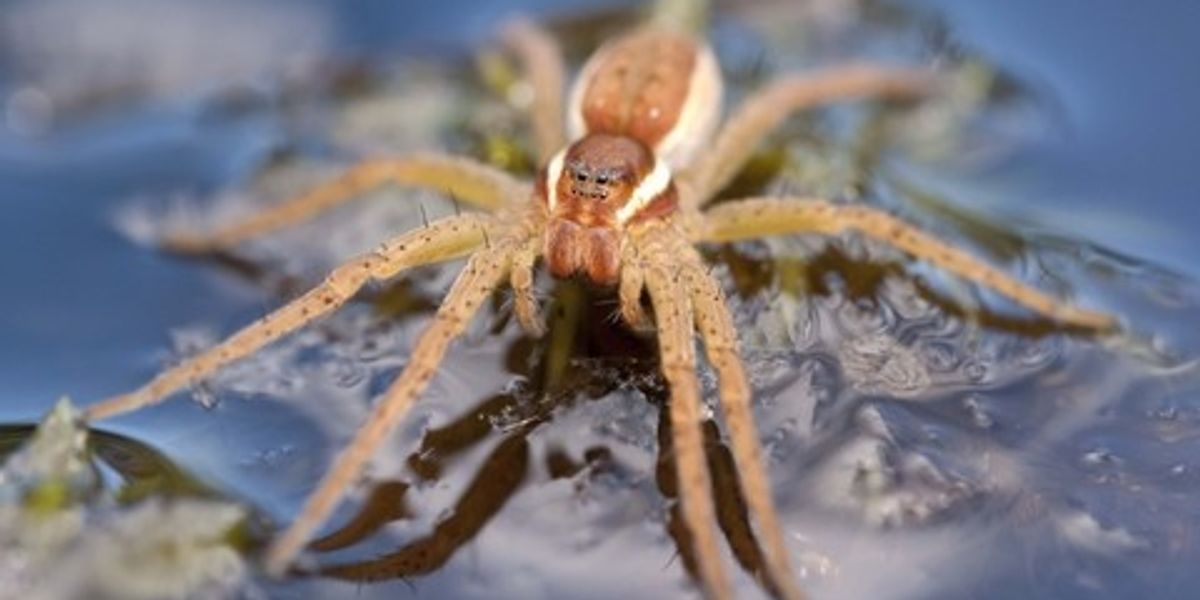Britain on High Alert: Giant Spiders, the Size of Human Hands, Unleashed by Chester Zoo!

In a move that could only be described as a scene straight out of a low-budget horror film, thousands of giant spiders have been unleashed upon the UK, thanks to a breeding scheme from the beloved Chester Zoo. Yes, you read that right. Those eight-legged creatures—whose very presence can send shivers down the spine of even the bravest soul—are being heralded as a resounding success of conservation efforts. Apparently, breeding spiders in test tubes is the new chic. Who knew?
Chester Zoo, in collaboration with the RSPB, has apparently made a remarkable comeback for the fen raft spider, which was teetering on the edge of extinction just fifteen years ago. In a remarkable twist of fate, they’ve managed to grow the population to over 10,000 breeding females. Yes, folks, that’s fist-sized arachnids cozying up all across the countryside, turning your average garden into an eight-legged metropolis. I’d say it’s time to reconsider that outdoor picnic, wouldn’t you?
The reason for their near extinction, you ask? As usual, it boils down to habitat destruction—who knew that all those white picket fences would come at such a cost? But fear not, for Chester Zoo's ambitious conservation breeding program is not just a tale of despair. After rearing hundreds of spiderlings in individual test tubes and hand-feeding them tiny flies with tweezers—because, of course, what else would you do on a Tuesday?—they have achieved what is being termed the “best year on record” for this particular species. Cue applause and faint laughter.
The fen raft spider, despite being larger than most house pets, plays a pivotal role in our ecosystems. These semi-aquatic arachnids, with legs that can stretch as wide as a human hand, have mastered the art of walking on water. Yes, they are like the Jesus of the spider world, the arachnid equivalent of a miracle. And unlike your average spider, they do not build webs. Instead, they engage in some rather glamorous hunting, preying on everything from fellow spiders to dragonfly larvae, with a flair that could impress even the most seasoned predator.
Tim Strudwick, the RSPB Mid Yare nature reserves site manager, waxed poetic about the beauty of these creatures, which sounds far more romantic than one would typically associate with spiders. He described the females as “impressive” and “beautiful,” even going so far as to say they are “truly special to see.” So, let’s make a note that the next time you encounter a spider the size of your fist, remember: beauty is in the eye of the beholder—especially if that beholder has had a tad too much wine.
Chester Zoo heralded their success in a rather jubilant fashion, proclaiming, “Ten years ago we helped release thousands of giant spiders back into the UK!” One can only imagine the locals’ reactions to that news—celebration or sheer panic?
Despite their imposing size, rest assured, these massive spiders are not out to get you. In fact, their presence is actually a sign that our ecosystems are thriving. So next time you spot one, instead of running scared or screaming like a banshee, consider that you might just be witnessing the resurgence of biodiversity. After all, if a group of dedicated folks can bring back the fen raft spider from the brink, perhaps we can tackle our own little existential crises, one finger-biting incident at a time.

